Что за вирус luhe fiha a
Luhe.Fiha.A is a computer threat that normally spreads on other computer and network PCs. The threat can infect other machines using various ways and the most common is copying its files to removable drives and shared network drives. Other type of worms may spread via spam email messages and links from malicious web pages. Threat such as Luhe.Fiha.A may install harmful elements into the infected drive so that it runs each time the drive is used.
Threat behavior
Luhe.Fiha.A uses Autorun function on the infected computer so that it executes on its own when the drive is accessed. Then, it will spread the executable file together with autorun.inf file into drives present on the infected PC. Other threats may also dropped Luhe.Fiha.A into the computer without user�s knowledge by concealing itself to other programs.
Altered freeware, serial generating programs, and crack software are also known sources used by attacker to deploy Luhe.Fiha.A.
During the existence of Luhe.Fiha.A, it tries to look for removable drives, network drives, and other shared resources where it can store itself. USB removable drive is the most exposed to Luhe.Fiha.A especially those that don�t have write protection feature. Network-shared resources that are not protected may also be targeted by Luhe.Fiha.A.
Aside from added files on affected drives, your antivirus program�s may give an alert about the presence of Luhe.Fiha.A. However, not all security software may identify this threat.
How can you remove Luhe.Fiha.A?
To totally remove Luhe.Fiha.A from the computer and get rid of relevant virus and trojan, please execute the procedures as stated on this page. Make sure that you have completely scan the system with suggested malware removal tools and virus scanners.
1. Open Microsoft Security Essentials by going to Windows Start > All Programs. If the tool is not yet installed on the computer, please download Microsoft Security Essentials from the link below. Save the file on your hard drive.
Complete installation guide and usage are also provided on the same link. It is essential in removing Luhe.Fiha.A effectively. If Microsoft Security Essentials is already installed on the PC, please proceed with the steps below.
2. On Microsoft Security Essentials Home screen, please choose Full under Scan Options.
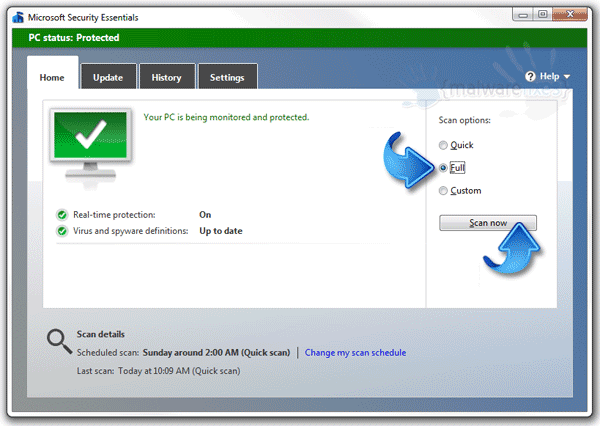
3. Click on Scan Now button to start detecting Luhe.Fiha.A items, viruses, and malware on the PC. Scan may take a while, please be patient and wait for the process to end.
Windows Defender is a free tool that was built to help you remove Luhe.Fiha.A, viruses, and other malicious items from Windows 8 or Windows 10 system. Follow these procedures to scan your computer with Windows Defender:
1. Tap or click the Search charm, search for defender, and then open Windows Defender.
If Windows Defender is not yet installed on the computer, please proceed to download page using the link below. It also contains detailed instruction to install and use the program effectively. Proper usage is required to totally remove Luhe.Fiha.A
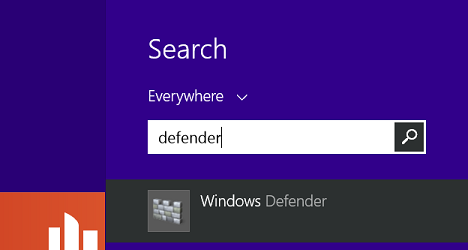
2. On the Home tab, click Full under Scan Options. Click Scan now to start scanning for presence of Luhe.Fiha.A. The process may take a while to complete.
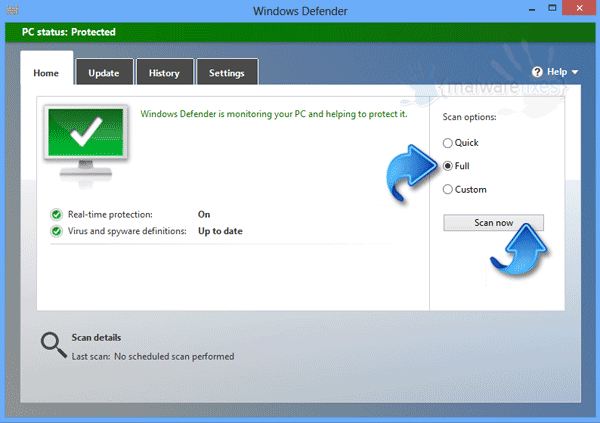
3. After the scan, delete/quarantine identified threats wether it is relevant to Luhe.Fiha.A or not. You may now restart Windows to complete the virus removal process.
1. Download Malwarebytes Anti-Malware from the link below. Save the file on your hard drive.
2. Once the download completes, double-click on the file MB3-SETUP.EXE to run the program.
3. Select desired installation language when it prompts you.Then, click OK.
4. Continue with the process until MalwareBytes Anti-Malware is fully installed on the computer. The program will run automatically.
5. When Malwarebytes Anti-Malware interface appears, please select Scan on sidebar menu. Then, choose Threat Scan as shown in the image below. Click on Start Scan button to begin the process. The program will check for any available update before proceeding. Do not skip this step. Virus scan may take a while, please wait for the process to finish.
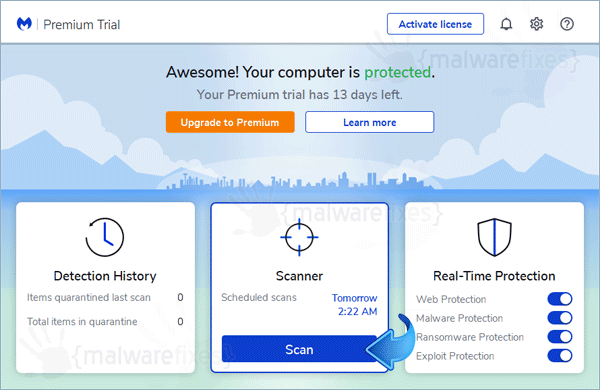
6. When scanning is done, Malwarebytes Anti-Malware will display the list of identified threats. Remove all and restart the computer to finalized the scan process.

Luhe.Fiha.A is a virus detected by Microsoft Windows and several Antivirus or Anti-Malware software vendors. This Luhe.Fiha.A threat is classified as PUP a Potentially Unwanted Program or PUA a Potentially Unwanted Programs because it inflicts and acts as a malicious threat into your Windows computer system.
Luhe.Fiha.A modifies system files, add’s new folders, creates Windows tasks and shows advertisements on your computer and browser.
Luhe.Fiha.A is adware which is bundled using custom installers and dropped on your computer during the installation process. Most users have no idea how this Luhe.Fiha.A threat is installed on there computer and what it is, until their Antivirus or Anti-Malware software detects it as a malicious threat or virus.
Follow our instruction to remove this Luhe.Fiha.A threat and protect your computer against another virus or adware infection.
If your protection detects Luhe.Fiha.A virus, it is not marked for deletion by default. It is detected as malicious and advised to remove Luhe.Fiha.A from your computer.
This is because some users might have installed Luhe.Fiha.A themselves. A lot PUP or PUA software is distributed by custom installers or as browser add-on for a better internet experience, like toolbars and malicious browser extensions pretend to be.
We advise MalwareBytes Anti-Malware (free software) to remove Luhe.Fiha.A from your computer. We also added Junkware Removal Tool and AdwCleaner to clean your browser and possible additional adware from your computer.
By using our simple removal instruction you make sure the Luhe.Fiha.A threat is fully removed from your computer and there is nothing left. This instruction will also speed up your computer and removes any possible other threats from your computer.

Step 1 – Remove Luhe.Fiha.A using AdwCleaner

Step 3 – Remove Luhe.Fiha.A using MalwareBytes Anti-Malware
Remove Luhe.Fiha.A using AdwCleaner
We strongly recommend using AdwCleaner several times a month to keep your computer clean from adware, pop-ups, browser hijackers and toolbars.
Download AdwCleaner (Download opens in a new Window)
Select AdwCleaner.exe with right mouse click and Run as Administrator

If User Account Control asks you to allow AdwCleaner.exe to make changes to your computer, press Yes to continue.

Start scanning your computer for any malicious threats by selecting the Scan button, please wait.

AdwCleaner will now start scanning your computer. If AdwCleaner is done, it will display a list of malicious items detected, please uncheck the items you do not want to remove that might be detected as malicious.
If you have nothing to uncheck, continue to the removal process and select the Clean button.

AdwCleaner will display the following informational alerts and starts rebooting the computer.
All programs will be closed in order to proceed correctly to the removal of the infections. Please save any work in progress and the click [OK]
If you have been brought to use AdwCleaner, it’s probably because your PC contained potentially unwanted programs or adware.
Potentially unwanted programs are often proposed during the installation of software. They may be present form of toolbars that sometimes change the homepage of the browser and slow internet browsing.
To avoid the installation of these programs polluting the computer, it is essential to follow these tips:
– Always download a program from the official link, or a trusted site
– When installing a program, do not click too fast [Next] without paying attention to Terms of Use and third-party programs available.
– If third-party programs are available (toolbars, etc) uncheck them.
– Enable detection of PUP (Potentially Unwanted Program) in your Antivirus.
AdwCleaner must restart the computer to complete the removal process. The report will be opened on the next reboot.
After the reboot a logfile will open. The logfile in Windows XP and Windows 7 will open once the desktop is started.
To open the logfile in Windows 8 you need to switch to the Desktop modus by selecting windows key + d on your keyboard.
Remove Luhe.Fiha.A left overs using Junkware Removal Tool
Junkware Removal Tool will not only remove this threat from your computer, but Junkware Removal Tool will scan and remove any threat from your computer that is malicious. Junkware Removal Tool is a great tool to completely clean your computer from any threat and highly recommended to use frequently to keep your computer clean and healthy. Best of all it’s free and updated regularly.
Download Junkware Removal Tool (Official link and direct-download)
Select JRT.exe with right mouse click and Run as Administrator

If User Account Control asks you to allow JRT.exe to make changes to your computer, press Yes to continue.

As described on thisisudax.org
Junkware Removal Tool is a security utility that searches for and removes common adware, toolbars, and potentially unwanted programs (PUPs) from your computer. A common tactics among freeware publishers is to offer their products for free, but bundle them with PUPs in order to earn revenue. This tool will help you remove these types of programs.
Please note: Close all your browsers, save any work and then press any key to continue.
Your desktop may blink or a new window may open during the scan and removal process of junkware removal tool.

When Junkware Removal Tool is done scanning and removing malicious items from your computer a logfile will open.
![]()
Remove Luhe.Fiha.A files with MalwareBytes Anti-Malware

Download MalwareBytes Anti-Malware
Malwarebytes Anti-Malware Free’s industry-leading scanner detects and removes malware like worms, Trojans, rootkits, rogues, spyware, and more. All you have to do is launch Malwarebytes Anti-Malware Free and run a scan. It’s that simple.
Or if you want even better protection, consider Malwarebytes Anti-Malware Premium and its instant real-time scanner that automatically prevents malware and websites from infecting your PC.
Either way you’re crushing malware and foiling hackers.
MalwareBytes Anti-Malware works great alongside Antivirus software, both MalwareBytes Anti-Malware and Antivirus software go along and provide the best protection for your computer.

Install MalwareBytes Anti-Malware using it’s installation wizard.
MalwareBytes Anti-Malware needs no configs or specific settings, just install and you are ready to scan your computer for malware and free removal.
- Select Scan Now to perform an anti-malware scan.

- Malwarebytes computer is scanning for malicious items, this might take a while, please wait for MalwareBytes Anti-Malware to finish.

- When the detection scan is finished, a window appears with the malware found by MalwareBytes.
To remove the found malware from your computer, select the Remove Selected button.

- All found items will be put in quarantine, if MalwareBytes Anti-Malware requires to a reboot to do so, please allow MalwareBytes Anti-Malware to reboot Windows.
A few days ago, AVG reported Luhe.fiha.a is in my computer but it didn’t remove it. Whenever AVG says it is removing, and it will stop at some point because the threat is too big. I searched on the web and it says the virus should be removed manually. I am not a computer savvy, how do I do that? I cannot afford to lose my data. Any help will be appreciated.
AVG Keeps Finding Luhe.fiha.a Virus? – An Overall Description About This Trojan:
Luhe.fiha.a is categorized as a malicious Trojan Horse that has been found by AVG a few years ago. Now it still has the power to infect PC users in these few days and damage their computer seriously. Typically, symptoms of a trojan infection may be very obvious or not visible at all. For this one, it can create its own registry entry so that it can load automatically whenever the PC user starts Windows. Though AVG can detect this Trojan, it cannot kill it effectively. The victim who get this virus may keep finding some objects were infected with Luhe.fiha.a. But when they take action to remove the virus, it gives an error or the window stops responding immediately. Even though sometimes it says it is removed but when you reboot the computer, even do it from the safe mode with networking too, and on the next scan, the virus is found again. It just keeps coming back and prevents computer users from removing it.
In addition, you will detect computer performance and network speed are obviously worse than ever since this pesky Trojan is occupying high proportion of system resources all through. When the threat acquires a place inside the computer, it instantly attacks Windows. It can make computer operating system in disorder or cause fatal errors so that people can’t use some programs that windows provides. Besides, with the help of this Trojan, other threats like Ransomware, browser hijacker or potentially unwanted program can access your computer without your permission. Luhe.fiha.a even can bring keyloggers inside the PC which is used to trace your all online activities through a remote server. That is to say, this threat has the ability to keep record of the sites you visited, steal your sensitive data like password, username, credit card details, bank account information, capture your keystrokes and send these information to cyber criminals. For the sake of your computer security, remove Luhe.fiha.a virus as quickly as you can.
From malicious drive-by-download scripts from corrupted porn and shareware / freeware websites.
Through spam email attachments, media downloads and social networks.
When clicking suspicious pop-ups or malicious links.
Open unknown email or download media files that contain the activation code of the virus.
Note: No matter how does the virus access your PC, users should know that there are no tools can remove this pesky Trojan automatically at this moment, it is suggested users not spend much time in downloading or paying any security software which claims can delete this stubborn virus. It is totally useless. To completely get rid of Luhe.fiha.a virus, professional manual guide is needed.
Currently many computer users had the same experience that this virus couldn’t be removed by any anti-virus applications. So the manual approach is always required to combat this virus. And here is the step-by-step removal guide for all computer users.
1. End the malicious process from Task Manager.
Once Luhe.fiha.a Virus is installed, computer user may notice that CPU usage randomly jumps to 100 percent. At any time Windows always has many running processes. A process is an individual task that the computer runs. In general, the more processes, the more work the computer has to do and the slower it will run. If your system’s CPU spike is constant and remain at a constant 90-95%, users should check from Task Manager and see if there is a suspicious process occupying system resources and then end it immediately.
(The name of the virus process can be random.)
Press Ctrl+Shift+Esc to quickly bring up Task Manager Window:

2. Show hidden files and folders.
Open Folder Options by clicking the Start button, clicking Control Panel, clicking Appearance and Personalization, and then clicking Folder Options.
Click the View tab.
Under Advanced settings, click Show hidden files and folders, uncheck Hide protected operating system files (Recommended) and then click OK.
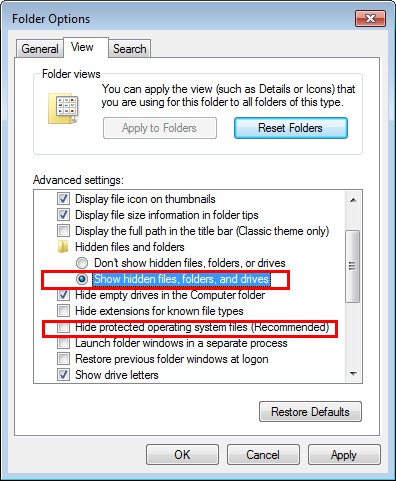
3. Open Registry entries. Find out the malicious files and entries and then delete all.
Attention: Always be sure to back up your PC before making any changes.
a. Press Windows key + R to open Run box. In the “Open” field, type “regedit” and click the “OK” button.
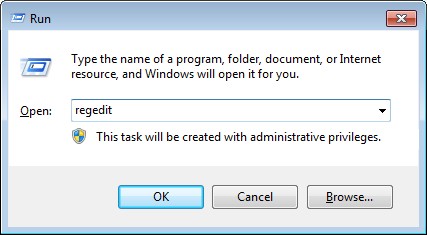
Then a Registry Editor window will pop up as the following picture shows:
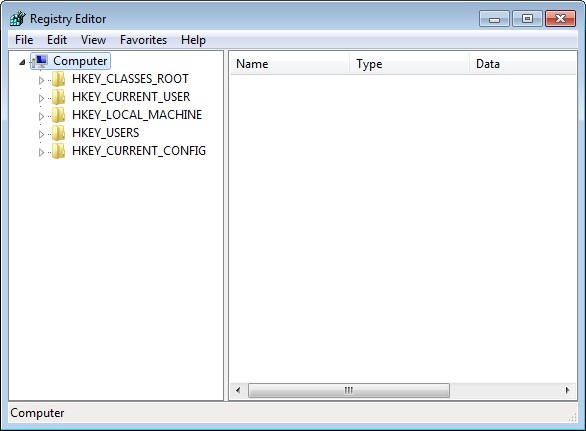
b. Search malicious files and registry entries related to Luhe.fiha.a virus and then remove all of them:
HKEY_LOCAL_MACHINE\SOFTWARE\Microsoft\Windows\CurrentVersion\run\
HKEY_LOCAL_MACHINE\SOFTWARE\Microsoft\Windows NT\CurrentVersion\Winlogon\[random]
HKEY_LOCAL_MACHINE\Software\Microsoft\Windows NT\CurrentVersion\Temp
Note: If you are not knowledgeable enough to be able to distinguish the location of this virus, or you are afraid of making mistake during the manual removal, please contact experts from Yoocare Online Tech Support for further help.
В Китае в провинции Юньнань местный житель умер от хантавируса. Об этом 24 марта сообщило издание Global Times. Мужчина ехал на работу и скончался в автобусе.
Результаты анализов показали, что он был заражен хантавирусом, при этом тест на новый коронавирус оказался отрицательным. Смерть жителя провинции Юньнань повлекла за собой ряд проверок, включая тестирование нескольких человек, находившихся рядом с умершим.
Что известно о хантавирусах?
Хантавирусы (лат. — Orthohantavirus или Hantavirus) — род вирусов человека и животных. Механизмы лечения заболеваний, которые они вызывают, известны, также существуют вакцины. Первая классификация рода хантавирус была выдвинута в 1987 году на докладе в Международном комитете по таксономии вирусов. В 2017 году название рода изменили на Orthohantavirus и включили в него 41 вид. В их числе —хантавирусы Пуумала, Хантаан, Сеул, Амур, Добрава и другие.
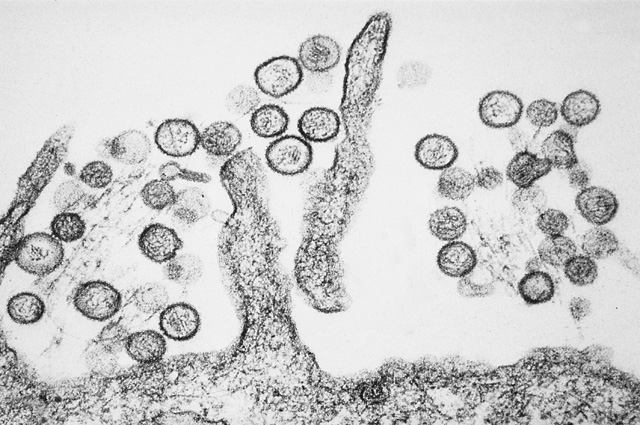
Как можно заразиться хантавирусом?
По данным Роспотребнадзора, заразиться хантавирусом можно от грызунов. В Китае также известны случаи, когда заражение происходило вследствие укуса некоторых видов насекомоядных летучих мышей. Считается, что от человека к человеку инфекция не передается, а больные опасности для других людей не представляют. Однако о случаях передачи болезни от человека к человеку заявляли ученые, которые изучали вспышки инфекции в Аргентине и Чили в 1990-е годы.
По данным Роспотребнадзора, в европейской части России чаще всего переносчиком хантавируса является европейская рыжая полевка, на территории Центрального Черноземья — полевая мышь, на юге страны — кавказская лесная мышь, в дальневосточных регионах — полевая и восточно-азиатские мыши, а также серая крыса.

Какие симптомы у болезни и чем она опасна?
Геморрагическая лихорадка с почечным синдромом (ГЛПС) — это острая природно-очаговая вирусная инфекция человека с характерным поражением мелких кровеносных сосудов, почек и других органов. Ее возбудителями являются хантавирусы Пуумала, Хантаан, Сеул, Амур и Добрава (семейство Буньявириде).
Болезнь начинается остро. С момента заражения до появления первых симптомов обычно проходит до двух недель. Максимальный срок инкубационного периода составляет 50 суток. В начальном периоде ГЛПС похожа на грипп или ОРВИ. У больного повышается температура тела, возникает головная боль, боли в мышцах, озноб, общая слабость, снижается аппетит. Возможно появление тошноты, рвоты и жидкого стула. У некоторых заразившихся также присутствует заложенность носа, сухой кашель, покраснение лица, шеи и верхней половины туловища.
Развитие болезни может привести к острой почечной недостаточности, пиелонефриту, гломерулонефриту и мочекислому диатезу. Кроме того, к болезни могут присоединиться вторичные инфекции бактериальной природы, которые способны стать причиной развития целого ряда опасных заболеваний. Осложнения могут быть тяжелыми и привести к летальному исходу.
Что за хантавирусный синдром?
Хантавирус также может стать причиной возникновения хантавирусного кардиопульмонального синдрома. Этим термином обозначают группу клинически схожих заболеваний, которые встречаются на территории Северной и Южной Америки. Первые симптомы болезни также напоминают обычную простуду, однако во второй стадии состояние больного резкого ухудшается. Тогда обычный кашель переходит в гипоксемию, шок и сердечную недостаточность. В этот период у больного повреждаются сосуды и происходит внутреннее кровотечение, а в дальнейшем болезнь приводит к интерстициальному пневмониту, отекам, воспалению тканей, отложениям фибрина и изменениям в легочной ткани.

Большинство смертей от хантавирусного кардиопульмонального синдрома фиксируется во время этой фазы, особенно часто — в течение 48 часов после первых признаков ухудшения состояния.
Как избежать заражения хантавирусом?
На дачном участке необходимо провести дератизацию, после чего регулярно проверять помещения на наличие мышей и крыс. Также не будет лишним защитить пищу и воду от доступа к ним грызунов. Не стоит пренебрегать тщательной термической обработкой еды, а перед каждым приемом пищи нужно тщательно мыть руки.
Как сообщил вчера веб-сайт Newsweek, в понедельник в Китае умер человек, заразившийся хантавирусом. По данным правительственной газеты Global Times, это был житель провинции Юньнань на юго-западе страны, скончавшийся во время поездки в восточную провинцию Шаньдун.
С мужчиной в автобусе находились 32 попутчика, и все они были протестированы на наличие вируса, однако результаты исследований еще не готовы.
Новость о смерти китайца пришла на фоне пандемии коронавируса. На данный момент число зараженных во всем мире уже превысило 400 тысяч человек. С момента вспышки вируса в декабре 2019 года в китайском городе Ухань от него погибло более 17 тысяч человек.
Уровень смертности от североамериканских штаммов хантавируса составляет 36%, что намного выше смертности от коронавируса, которая, по оценкам Всемирной организации здравоохранения, достигла 3,4%.
Поскольку китайские власти протестировали на наличие хантавируса ещё 32 человека, находившихся в том автобусе, в настоящее время люди начинают беспокоиться о возможности начала новой пандемии.
По данным центров США по контролю и профилактике заболеваний, хантавирусы распространяются главным образом посредством грызунов, а они в свою очередь могут инфицировать людей.
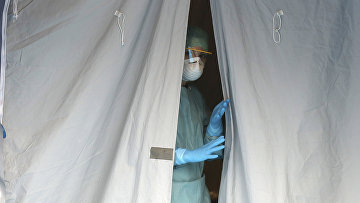
По мнению экспертов, человек может заболеть, если коснулся рта или носа после контакта с поверхностью, загрязненной мочой, фекалиями или слюной животного-переносчика вируса, например, мыши. Кроме того, заболевание может передаваться людям при употреблении пищи, загрязненной мочой или фекалиями зараженного грызуна.
Существует множество видов хантавируса. Например, в Америке болезнь получила название хантавирусного легочного синдрома (ХЛС), в то время как в Европе или Азии заражение может привести к геморрагической лихорадке с почечным синдромом (ГЛПС).
Пока неизвестно, от какого именно заболевания умер мужчина в Китае.
По данным центров США по контролю и профилактике заболеваний, в Соединенных Штатах хантавирусы не могут передаваться от человека к человеку, в то время как редкие случаи такого заражения были зарегистрированы в Чили и Аргентине.
Обычно хантавирусом можно заразиться в сельских районах с обилием лесов, полей или ферм, где обитают грызуны.
Каковы симптомы заражения?
Прежде всего, выделим симптомы хантавирусного легочного синдрома:
3. Мышечные боли, особенно в бедрах и спине
5. Головная боль
9. Боли в животе
10. Через четыре-десять дней у человека может появиться одышка и кашель
11. Жидкость в легких
Смертность от хантавирусного легочного синдрома достигает 38% людей.
Симптомы геморрагической лихорадки с почечным синдромом:
2. Боли в животе
3. Головная боль
7. Ухудшение зрения
8. Покраснение лица
9. Низкое артериальное давление, шок
10. Острая почечная недостаточность
От ГЛПС умирают от 1 до 15% пациентов.
По данным Национальной медицинской библиотеки США, специфическое лечение и вакцина для хантавируса не разработаны. Выздоровление пациентов наступает при ранней диагностике и получении медицинской помощи в отделении интенсивной терапии. Зачастую они нуждаются в кислородной терапии.
Хорошие новости
Хорошей новостью является то, что вероятность вспышки эпидемии хантавируса низка, поскольку он распространяется через прямой контакт с зараженными грызунами.
Таким образом, число людей, инфицированных этим вирусом, в мире невелико. Так, с января 2017 года в Соединенных Штатах зарегистрировано всего 728 случаев заражения хантавирусом. Еще меньше случае в других странах.
Другими словами, вам не стоит беспокоиться о вспышке новой эпидемии. Достаточно паники вокруг коронавируса, который может привести к летальному исходу. Лучше обратите тревогу в свою пользу и следуйте рекомендациям органов здравоохранения вашей страны, тщательно мойте руки с мылом и придерживайтесь правил личной гигиены.
Материалы ИноСМИ содержат оценки исключительно зарубежных СМИ и не отражают позицию редакции ИноСМИ.
![]()
![]()
![]()
![]()
![]()

![]()




![]()

![]()
- Популярное
- Обсуждаемое
При полном или частичном использовании материалов ссылка на ИноСМИ.Ru обязательна (в интернете — гиперссылка).


Произошла ошибка. Пожалуйста, повторите попытку позже.
Факт регистрации пользователя на сайтах РИА Новости обозначает его согласие с данными правилами.
Пользователь обязуется своими действиями не нарушать действующее законодательство Российской Федерации.
Пользователь обязуется высказываться уважительно по отношению к другим участникам дискуссии, читателям и лицам, фигурирующим в материалах.
Публикуются комментарии только на русском языке.
Комментарии пользователей размещаются без предварительного редактирования.
Комментарий пользователя может быть подвергнут редактированию или заблокирован в процессе размещения, если он:
В случае трехкратного нарушения правил комментирования пользователи будут переводиться в группу предварительного редактирования сроком на одну неделю.
При многократном нарушении правил комментирования возможность пользователя оставлять комментарии может быть заблокирована.
Пожалуйста, пишите грамотно – комментарии, в которых проявляется неуважение к русскому языку, намеренное пренебрежение его правилами и нормами, могут блокироваться вне зависимости от содержания.
Читайте также:




